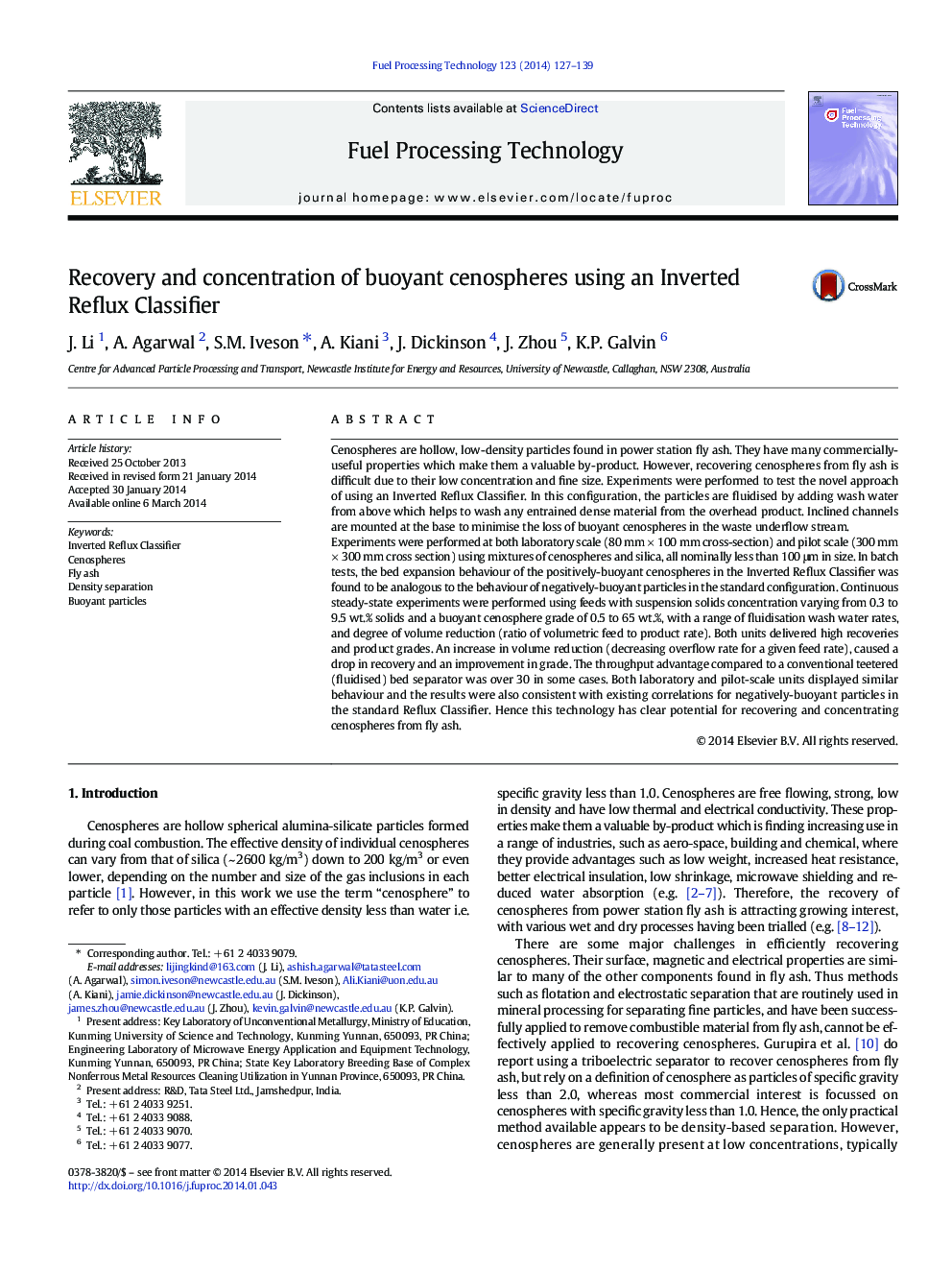| کد مقاله | کد نشریه | سال انتشار | مقاله انگلیسی | نسخه تمام متن |
|---|---|---|---|---|
| 209689 | 461680 | 2014 | 13 صفحه PDF | دانلود رایگان |
• Inverted Reflux Classifiers effectively separate buoyant cenospheres from silica.
• High cenosphere grades and recoveries were obtained.
• Results agreed across lab and pilot scale and with literature correlations.
• Throughput advantages of over 30 were obtained in comparison to fluidised beds.
• This technology should be able to efficiently recover cenospheres from flyash.
Cenospheres are hollow, low-density particles found in power station fly ash. They have many commercially-useful properties which make them a valuable by-product. However, recovering cenospheres from fly ash is difficult due to their low concentration and fine size. Experiments were performed to test the novel approach of using an Inverted Reflux Classifier. In this configuration, the particles are fluidised by adding wash water from above which helps to wash any entrained dense material from the overhead product. Inclined channels are mounted at the base to minimise the loss of buoyant cenospheres in the waste underflow stream.Experiments were performed at both laboratory scale (80 mm × 100 mm cross-section) and pilot scale (300 mm × 300 mm cross section) using mixtures of cenospheres and silica, all nominally less than 100 μm in size. In batch tests, the bed expansion behaviour of the positively-buoyant cenospheres in the Inverted Reflux Classifier was found to be analogous to the behaviour of negatively-buoyant particles in the standard configuration. Continuous steady-state experiments were performed using feeds with suspension solids concentration varying from 0.3 to 9.5 wt.% solids and a buoyant cenosphere grade of 0.5 to 65 wt.%, with a range of fluidisation wash water rates, and degree of volume reduction (ratio of volumetric feed to product rate). Both units delivered high recoveries and product grades. An increase in volume reduction (decreasing overflow rate for a given feed rate), caused a drop in recovery and an improvement in grade. The throughput advantage compared to a conventional teetered (fluidised) bed separator was over 30 in some cases. Both laboratory and pilot-scale units displayed similar behaviour and the results were also consistent with existing correlations for negatively-buoyant particles in the standard Reflux Classifier. Hence this technology has clear potential for recovering and concentrating cenospheres from fly ash.
Journal: Fuel Processing Technology - Volume 123, July 2014, Pages 127–139
